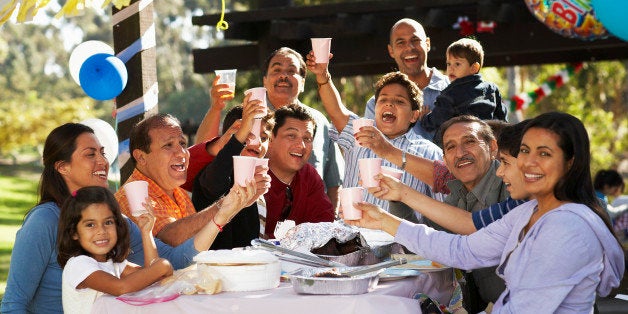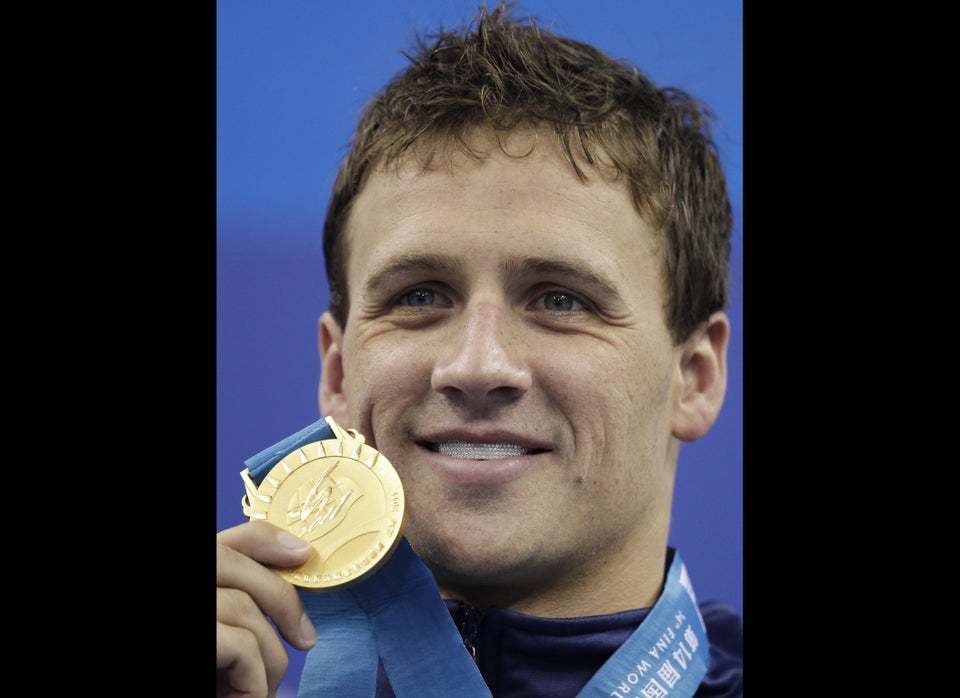
It’s an exciting time to be a Latino. The community's numbers are growing rapidly. Latinos already outnumber non-Hispanic whites in New Mexico and California, and by 2050 the U.S. Census estimates that roughly one in three Americans will be Latino. With more than $1 trillion in spending power, more people than ever are trying to figure out how to appeal to America’s largest minority demographic.
But most who try quickly find that it isn’t easy. One feature clearly unites the 53 million Latinos of the United States -- Latin American or Spanish birth or heritage. But beyond that, the community’s unifying characteristics disintegrate into a geographically disaggregated, bilingual jumble of two dozen nationalities and differing levels of acculturation, raising questions about whether it even makes sense to group everyone under the same term.
When the Pew Hispanic Center asked last year how U.S. Latinos prefer to describe themselves, few people responded using the terms "Hispanic" or "Latino." Those two descriptors are favored by government, media and marketers -- all of whom have an interest in viewing Latinos as a single ethnicity. Instead, 51 percent of respondents preferred to be grouped by their country of origin, while only 24 percent said they favored a pan-ethnic term such as “Latino” or “Hispanic.”
Even the notion of national origin can have different meanings, as Gustavo Arellano, editor of O.C. Weekly and author of the column “Ask a Mexican,” explains.
“Some days I feel like a Latino,” Arellano told The Huffington Post. “Some days I feel Chicano. Some days I feel like a Mexicano. Most days I feel like a Zacatecano, because that’s where my parents are from and that’s what my heritage is. I’m never really a Hispanic, because that’s just not a term that I use. I rarely think of myself as an American, because that’s just so self-evident that it reeks of desperation to identify myself as such.”
Geography reinforces some of the differences. Each region of the country boasts a major Latino group that tinges the area with its own political, cultural and economic imprint. The largest chunk of the Latino community resides in the Southwest, where Latinos who originated from the territory today known as Mexico have lived since long before English-speaking settlers showed up in the 18th Century. People of Mexican origin also dominate the Midwest, particularly Chicago. Cuban-Americans have a hold in South Florida politics. And Puerto Ricans and Dominicans account for almost half of New York City’s diverse Latino community.
Those differences make it harder to pinpoint a collective Latino identity, according to professor Rudolfo Acuña, author of the classic Chicano history Occupied America.
“It’s a compromise term,” Acuña told HuffPost. “I don’t know if it’s an identity. Sometimes I think it ['Latino'] doesn’t make sense. I think it gives the Cuban-Americans much more clout than it does to Mexican-Americans, just from the mere fact that Cuban-Americans don’t add that much to our numbers. The class difference between the two groups is gaping, and there are a lot of things that separate us.”
Recalling the Chicano movement and the Chicago- and New York-based Puerto Rican nationalist Young Lords movement, Acuña said that Latino subgroups thrived on their sense of national origin in the 1960s.
“Did the Young Lords identify themselves as Latino? No, they identified as Puerto Rican. And there was a strength to that,” Acuña said. “That is what I like about Junot Diaz. He is specifically Dominican, and he doesn’t shy away from that.”
National origin is only the Latino community’s most obvious cleavage. Language and acculturation add another layer of complexity to the U.S. Latino experience. Some 24 percent of Latinos are English-dominant, while 38 percent are Spanish-dominant and another 38 percent describe themselves as fluently bilingual, according to a 2011 Pew study. Those born in the United States -- by far the majority -- tend to favor English and intuitively understand U.S. culture more readily than first-generation immigrants, giving many Latino homes a highly pronounced generation gap.
María Hinojosa understands that gap from both a personal and a professional point of view. The Mexican-born, Chicago-raised host of the NPR-distributed radio news show Latino USA has spent the last two decades covering the Latino community and its layered identity. Her son Raul’s birth in 1996 prompted new questions for her about what her heritage was going to mean for her family.
“I have no idea what kind of Latino Raul is going to be,” Hinojosa told HuffPost. “He did not grow up idealizing Martin Luther King or Cesar Chavez the way I did. He has a different idea of what being a Latino is. What we have to recognize is that being Latino is something that is going to be changing. To put us in a box is not going to work for us.”
But for all its divisions, Hinojosa says the ties that bind the Latino community together are strong enough to forge a common identity. For Hinojosa, it was moving to New York in 1979 and coming into contact with Afro-Latinos, Puerto Ricans, Colombians and others that awakened a Latino consciousness beyond her Mexican roots.
“My mind exploded,” Hinojosa told The Huffington Post. “I’m not just this one little thing, a Mexican-American from the Midwest. I’m part of a pan-Latin community.”
Striking at the heart of the pan-Latin identity presents a unique problem for the businesses that hope to capitalize on the community’s rapid growth. To succeed, they must at times tailor their messages to specific Latino subgroups, but also remain relevant to the others that make the market so large.
“I look for the points we have in common,” said Carlos Vasallo, CEO of LatinVision Media, which organizes conferences to connect business leaders focused on the Latino market. “Soccer, for example, is popular in all of Latin America among men, and telenovelas among women … Latinos are more family-oriented; they think more about the collective. So if you make an appeal with family values, with abuelo and abuela, you’re going to reach a larger audience.”
Such broad strokes may work for general marketing, but politics has its own pitfalls. The consensus among those who spoke to HuffPost for this article was that politicians must tailor their messages for local communities if they hope to have an impact. But that approach makes it difficult to unite a community that remains largely leaderless at the national level.
Perhaps a national Latino leader isn’t necessary, said Tony Diaz, also known as “El Librotraficante.” The 45-year-old, Texas-based author has spent the past two years working on a national effort to oppose a ban on a controversial Mexican-American studies program in Tucson, Ariz. As a longtime political activist, Diaz knows well the fault lines that cross the country’s diverse Latino community.
“Those of us who’ve been in the field, we can articulate the specifics of our community. To other folks, it’s this huge swirl,” Diaz said. “I think what we will need for our community is 1,000 leaders. It’s not going to be like the civil rights era where you can have one leader. It’s not in our interest.”
It remains to be seen what those leaders will call themselves.
“I’m proud to be Chicano, I’m proud to be Mexican,” Diaz said. “But as an organizer, I realize that it’s word ‘Latino’ that got us here.”

